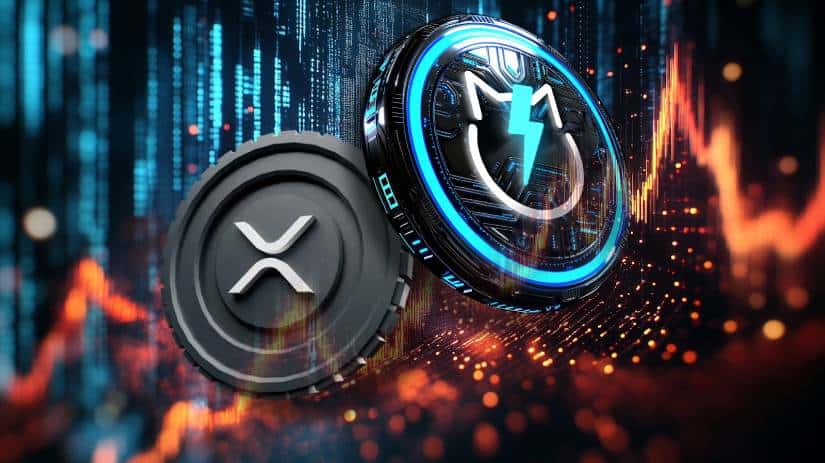XRP Legal Victory: SEC Drops Lawsuit Against Ripple After Four Years
In a landmark decision, the U.S. Securities and Exchange Commission (SEC) has officially ended its four-year lawsuit against Ripple, the company behind XRP. Ripple’s Chief Legal Officer, Stuart Alderoty, highlighted the SEC’s inability to enforce ambiguous regulations as the primary reason for the case’s dismissal. This development marks a significant victory for Ripple and the broader cryptocurrency industry, as it underscores the need for clear regulatory frameworks. The conclusion of this legal battle could pave the way for increased adoption and price appreciation for XRP, as market confidence in the asset grows. As of May 4, 2025, the cryptocurrency community is closely watching how this decision will influence XRP’s future trajectory and regulatory clarity in the digital asset space.
Ripple CTO Explains SEC’s Decision to Drop XRP Lawsuit After Four-Year Battle
The U.S. Securities and Exchange Commission has officially ended its lawsuit against Ripple, marking the conclusion of a four-year legal battle. Ripple’s Chief Legal Officer, Stuart Alderoty, summarized the case in a concise video, attributing the SEC’s retreat to its inability to enforce ambiguous regulations. "You can’t sue someone before you explain the rules," Alderoty stated, underscoring the regulatory clarity debate that has long plagued the crypto industry.
The resolution signals a potential shift in U.S. crypto regulation, with Ripple framing the outcome as a victory for consumer protection and market fairness. The case’s dismissal may set a precedent for how regulators approach digital asset enforcement moving forward.
Ripple and Chainlink Vie for Influence in U.S. Crypto Regulation
Ripple and Chainlink, two leading blockchain entities, are intensifying efforts to shape U.S. cryptocurrency policy through lobbying. The competition escalated following the 2024 presidential election, with both firms seeking to integrate their technologies into the regulatory framework.
Brad Garlinghouse’s Ripple and Sergey Nazarov’s Chainlink employ distinct strategies to sway policymakers. Their focus: securing favorable rules for cross-border payments (XRP) and decentralized oracle networks (LINK). The outcome could determine which protocol gains institutional traction.
Ripple’s Ambitious $20B Bid for Circle Sparks Market Speculation
Ripple’s aggressive pursuit of Circle has reignited market chatter, with its revised $20 billion offer signaling a bold consolidation play. The deal, if realized, would mark one of the largest acquisitions in crypto history—a stark escalation from its initial $5 billion approach.
Market analysts remain divided on the bid’s feasibility. While some view it as a strategic power move to dominate cross-border payments and stablecoin markets, others question the valuation metrics. Ripple CEO Brad Garlinghouse’s expansionist strategy appears undeterred by skepticism, though the company maintains official silence.
Polymarket Bettors Favor XRP Rally to $2.10 by May End
XRP’s price trajectory is drawing significant attention on prediction platform Polymarket, with 82% of $116,432 in total bets favoring a $2.10 price target by May’s close. The $2.10 level commands $6,700 in volume—the highest among all thresholds—while the $2.30 target trails with $6,290 in bets but weaker odds.
The token currently trades at $2.20, reflecting a 7% monthly gain despite a 21% drop in 24-hour trading volume to $1.83 billion. Market participants appear divided on lower price points: $1.90 holds 49% odds with $6,151 in volume, while a surprising $38,821 backs the $1.50 target despite just 10% probability.
Ripple and SEC Lawsuit Resolution Sparks Fresh Optimism in the Crypto World
The prolonged legal battle between Ripple and the U.S. Securities and Exchange Commission has reached a definitive conclusion, injecting renewed Optimism into the cryptocurrency market. Stuart Alderoty, Ripple’s Chief Legal Officer, confirmed the closure of all SEC lawsuits against the company during a recent segment of ’Crypto In One Minute.’ This development marks a pivotal moment for XRP, which faced severe price volatility and exchange delistings during the litigation.
Market participants are now speculating about the potential for an XRP-focused ETF, a prospect that seemed improbable during the height of regulatory uncertainty. The resolution underscores growing clarity for digital assets navigating U.S. securities laws, potentially setting a precedent for other projects.
Why XRP’s Price Isn’t Reflecting Its True Utility Yet
XRP remains one of the most utility-driven assets in crypto, facilitating billions in cross-border payments with settlement times of just 3 to 5 seconds. Major banks and institutions globally rely on it, yet its price performance lags behind its operational significance.
The disconnect stems from institutional adoption patterns. Most large-scale XRP transactions occur over-the-counter (OTC), bypassing public exchanges entirely. This hidden demand creates a blind spot in market data, insulating prices from the asset’s real-world usage.
Ripple’s acquisition of Hidden Road could disrupt this equilibrium. The prime brokerage infrastructure may bridge the gap between institutional flows and public markets, potentially unlocking XRP’s price discovery mechanism.

